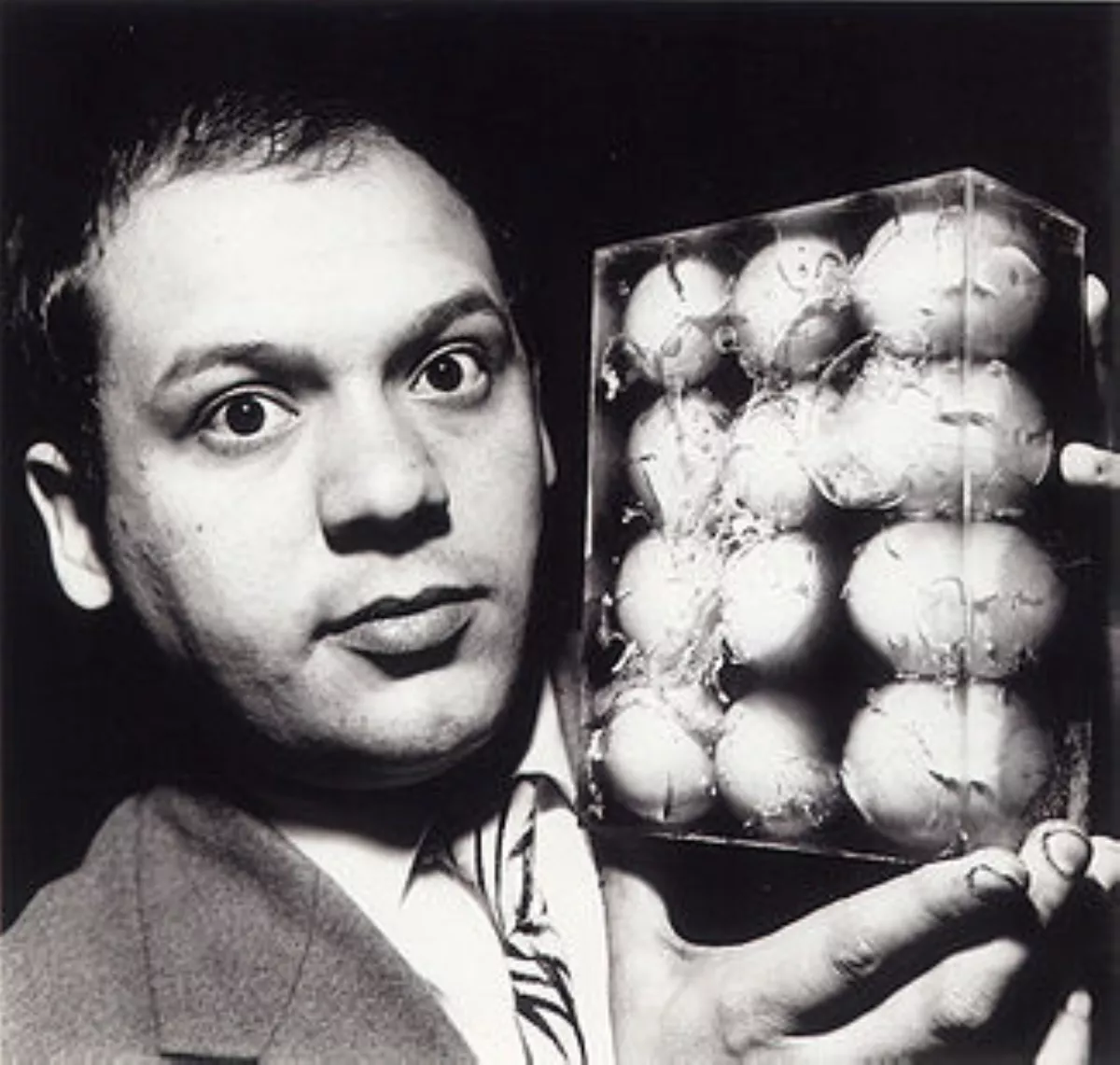 1.
1. Piero Manzoni di Chiosca e Poggiolo was an Italian artist best known for his ironic approach to avant-garde art.

 1.
1. Piero Manzoni di Chiosca e Poggiolo was an Italian artist best known for his ironic approach to avant-garde art.
Piero Manzoni's work eschews normal artist's materials, instead using everything from rabbit fur to human excrement in order to "tap mythological sources and to realize authentic and universal values".
Piero Manzoni's work is widely seen as a critique of the mass production and consumerism that was changing Italian society after World War II.
Italian artists such as Piero Manzoni had to negotiate the new economic and material order of post-war Europe through inventive artistic practices which crossed geographic, artistic, and cultural borders.
Piero Manzoni died of myocardial infarction in his studio in Milan on February 6,1963.
Piero Manzoni was born in Soncino, in the province of Cremona, as the eldest of five children of Egisto Piero Manzoni and Valeria Meroni.
Self-taught as an artist, Piero Manzoni first exhibited at the Soncino's Castle in Soncino in August 1956, at the age of 23.
Piero Manzoni's work changed irrevocably after visiting Yves Klein's exhibition 'Epoca Blu' at the Galleria Apollinaire in Milan, January 1957.
Piero Manzoni experimented with phosphorescent paint and cobalt chloride so that the colours would change over time.
Piero Manzoni founded the Azimut Gallery in Milan in 1959 with the artist Enrico Castellani, and staged a series of revolutionary exhibitions of multiples.
In May 1961, Piero Manzoni created 90 small cans, sealed with the text Artist's Shit.
Piero Manzoni designated a number of people, including Umberto Eco, as authentic works of art gratis.
Various other experimental pieces by Piero Manzoni included trying to create a mechanical animal as a moving sculpture and using solar energy as a power source.
Piero Manzoni's work is represented in many public collections, including the Museum of Modern Art, New York; Stedelijk Museum, Amsterdam; Tate Modern, London; the Galleria Civica d'Arte Moderna e Contemporanea, Turin; and the Museum of Contemporary Art Villa Croce in Genoa.